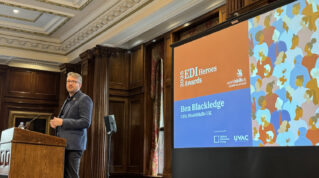Around one-quarter of all students are neurodiverse, but are our campuses and estates designed in a way that caters for everyone? How well do sector leaders understand the significance of environment in meeting neurodivergent students’ needs, and are they equipped to do so?
The first step in designing buildings that are inclusive of neurodiverse learners is to understand exactly what the term means.
Neurodiversity is the concept that brain differences are natural variations and that some people’s brains simply work in a different way. For the 22 per cent of students are neurodiverse, these differences may mean they are diagnosed with one or more neurological conditions within a broad range that includes autism, dyslexia and ADHD.
Understanding these differences and variations lays the foundation for ensuring that every student has an accessible and comfortable learning environment. By accepting that a student’s learning experience is impacted by how their brain processes information and by their surroundings, we can keep their specific needs in mind right from the planning phase.
It’s equally important to understand the differences between SEND (Special Educational Needs and Disabilities) and neurodiversity. Although there is a BSI standard relating to neurodiversity in the built environment which aims to help with the design, creation and management of neurodivergent-inclusive environments, it is more likely to be overlooked in the design industry.
While SEND and neurodiversity differ, there is an overlap. Some conditions considered neurodiverse, including ADHD, autism, dyslexia, dyscalculia and dyspraxia can also be classified as SEND conditions. However, some are not.
Therefore, engaging at an early stage with key stakeholders such as staff, experts, parents, students and those with lived experience is essential to fully integrate needs into a building’s design. That work shouldn’t end at the consultation stage. Doing so ongoingly can help leaders to prioritise, plan and eliminate any issues or missed steps.
Some adaptations might be simple, quick fixes
Working with experienced suppliers who understand the needs of educational buildings used by neurodiverse students can also lead to quicker project completion. The more specialists are involved from the beginning, the more likely students will be able to thrive in inspiring, safe and sustainable learning environments.
To ensure an environment is suitable for neurodiverse students, colleges must start by assessing their buildings.
Some adaptations might be simple, quick fixes: the brightness of artificial lighting, access to natural light, removing distractions or making smaller breakout spaces available.
Larger considerations include the ability to move around. Many neurodiverse learners, for example, can struggle in large or loud environments and feel more comfortable in a low-stimulus space. Teachers can factor this into their teaching plans – but will do so most effectively if classroom layouts and the building itself allow it.
Although changing behaviours, attitudes and practices can help to create a more accessible learning environment, it may not always be enough. Some buildings may require long-term estate planning and refurbishment if the structure is not suited to accommodating a wide range of learning styles.
Having said that, adapting to meet the needs of a diverse range of students will also help to futureproof estates and ensure sustainability, not only in terms of decarbonisation but also in terms of maintaining high applications and admissions rates.
However, doing so will be a steep hill to climb without government funding.
Sadly, of the £2.6 billion allocation announced in 2021 to create 20,000 new specialist education places, the FE sector will see only a very small fragment. Current projects plan for only 160 places for young people with SEND in colleges — less than 1 per cent of the total.
This investment is a significant step in the right direction for schools, but many if not most of these students will transition to the FE sector before long. Welcoming them into unsuited environments will only add to pressure on staff – a pressure that is already associated with recruitment and retention challenges in the school sector.
So the funding settlement will need to change, but in the meantime, there’s no reason not to make progress where we can.
Whether that’s through quick fixes or embedding neurodiversity in already-scheduled projects, ensuring neurodiverse students can thrive should be a priority now.

















Your thoughts